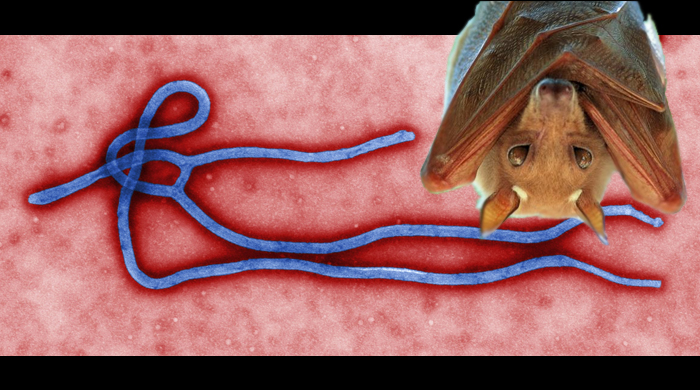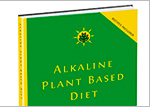What Is Ebola Virus? I Don’t Mean To Scare You With This Post
What Is Ebola Virus?

There are some things we don’t feel like dealing with because they remind us how fragile we are and the Ebola virus is one of those things. What is Ebola Virus? The Ebola virus causes Ebola Virus Disease (EVD), formerly known as Ebola Haemorrhagic Fever and is a severe and often fatal disease spread to humans.
The Ebola virus presents with flu-like symptoms that include: fatigue, fever, joint and muscle pain, abdominal pain, headache and sore throat. As the Ebola virus worsens vomiting, loss of appetite and diarrhea follows. This is followed by a bleeding stage caused by intravascular coagulation which is the cause of death.
Intravascular coagulation or disseminated intravascular coagulation (DIC) is the over activation of the blood clotting process that results in the formation of blood clots in the small blood vessels throughout the body. Blood flow to the tissues and cells of the body’s organs is restricted cutting off nutrient distribution to the organs of the body.
Nutrients like oxygen and glucose that is needed for cellular metabolism is restricted, resulting in tissue death and organ failure. As the blood clotting factors that are responsible for the formation of blood clots and in this case intravascular coagulation are used up, severe internal and external bleeding in the body often occurs.The impaired blood clotting may present itself as reddening of the eyes, internal bleeding into the skin, vomiting blood, coughing up blood, and defecating blood.
What Causes The Ebola Virus?
Ebola virus disease (EVD) is caused by 5 distinct species of the Genus Ebolavirus that includes:
- Bundibugyo ebolavirus (BDBV)
- Zaire ebolavirus (EBOV)
- Reston ebolavirus (RESTV)
- Sudan ebolavirus (SUDV)
- Taï Forest ebolavirus (TAFV).v
BDBV, EBOV, and SUDV outbreaks have occurred in Africa, but RESTV and TAFV outbreaks have not. The RESTV species has been found in the Philippines and the People’s Republic of China. Though this species can infect humans no illness or death from this species have been reported to date.
Where Does Ebola Originate?
The Ebola virus first appeared in 2 simultaneous outbreaks in 1976, in Nzara and Sudan, and in a village in the Democratic Republic of Congo near the Ebola River and in Yambuku. The disease takes its name from the Ebola River. The virus usually appears in areas where the people are malnourished and have weakened immune systems which makes them susceptible to the virus.
How Is The Ebola Virus Transmitted
The Ebola virus appears to be transmitted to humans through the handling or eating of infected animals. In Africa, infection has been documented through the handling of infected chimpanzees, gorillas, fruit bats, monkeys, forest antelope and porcupines found ill or dead in the forest.
Fruits bats are considered to likely be the natural hosts of the Ebola virus. Some people do feel the virus is man-made and was spread through animals, but this is another subject for debate. The virus is also spread through the ritual washing of infected bodies of the deceased.
Ebola Virus Outbreak Numbers
The current outbreak of Ebola is of even more concern because of its high numbers compared to previous outbreaks.
| Year | Country | Ebolavirus species | Cases | Deaths | Case fatality |
| March 2014 – Present | Guinea, Liberia, Sierra Leone, Nigeria | Ebola virus | 1134 | 622 | 54.9% |
| November 2012-January 2013 | Uganda | Sudan virus | 6 | 3 | 50% |
| June-November 2012 | Democratic Republic of the Congo | Bundibugyo virus | 36 | 13 | 36.1% |
| June-October 2012 | Uganda | Sudan virus | 11 | 4 | 36.4% |
| May 2011 | Uganda | Sudan virus | 1 | 1 | 100% |
| December 2008-February 2009 | Democratic Republic of the Congo | Ebola virus | 32 | 15 | 47% |
| November 2008 | Philippines | Reston virus | 6 | 0 | 0% |
| December 2007-January 2008 | Uganda | Bundibugyo virus | 149 | 37 | 25% |
| 2007 | Democratic Republic of Congo | Ebola virus | 264 | 187 | 71% |
| 2005 | Congo | Zaire | 12 | 10 | 83% |
| 2004 | Russia | Ebola virus | 1 | 1 | 1% |
| 2004 | Sudan (South Sudan | Sudan virus | 17 | 7 | 41% |
| November-December 2003 | Republic of Congo | Ebola virus | 35 | 29 | 83% |
| December 2002-April 2003 | Republic of Congo | Ebola virus | 143 | 128 | 90% |
| October 2001-March 2002 | Congo | Ebola virus | 57 | 43 | 75% |
| October 2001-March 2002 | Gabon | Zaire | 65 | 53 | 82% |
| 2000-2001 | Uganda | Sudan virus | 425 | 224 | 53% |
| 1996 | Russia | Ebola virus | 1 | 1 | 100% |
| 1996 | Philippines | Reston virus | 0 | 0 | 0% |
| 1996 | USA | Reston virus | 0 | 0 | 0% |
| 1996 | South Africa | Ebola virus | 2 | 1 | 50% |
| 1996-1997 (July-January) | Gabon | Ebola virus | 60 | 45 | 75% |
| 1996 (January-April) | Gabon | Ebola virus | 37 | 21 | 57% |
| 1995 | Democratic Republic of Congo | Ebola virus | 315 | 254 | 81% |
| 1994 | Cote d’Ivoire | Taï Forest | 1 | 0 | 0% |
| 1994 | Gabon | Ebola virus | 52 | 31 | 60% |
| 1992 | Italy | Reston virus | 0 | 0 | 0% |
| 1989-1990 | Philippines | Reston virus | 3 | 0 | 0% |
| 1990 | USA | Reston virus | 4 | 0 | 0% |
| 1989 | USA | Reston virus | 0 | 0 | 0% |
| 1979 | Sudan | Sudan virus | 34 | 22 | 65% |
| 1977 | Zaire | Ebola virus | 1 | 1 | 100% |
| 1976 | England | Sudan virus | 1 | 0 | 0% |
| 1976 | Sudan | Sudan virus | 284 | 151 | 53% |
| 1976 | Democratic Republic of Congo | Zaire | 318 | 280 | 88% |
References:
World Health Organization
National Geographic – Where Does Ebola Hide Between Epidemics?
How Ebola Kills
Tags: ebola, ebola virus, ebola virus disease






